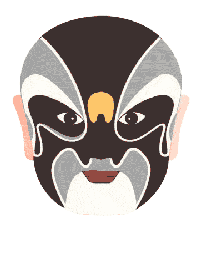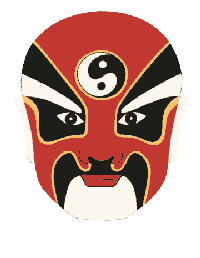| Art Q&A > Opera | กก |
|
The Colors of Peking Opera
Of the four roles of Peking Opera -- sheng, dan, jing and chou, only the jing and chou roles have elaborate facial make-up called "lianpu." There are relatively few lianpu patterns for a chou role -- the most common being a white- The origin of lianpu can be traced back to the Southern and Northern Dynasties Period more than 1,400 years ago when leading actors used to wear masks. As the operatic arts developed performers gradually took off their masks and painted colorful patterns on their faces instead since it was difficult to show facial expressions behind a mask. During the heyday of Peking Opera in the Qing
Dynasty (1644-1911), performers carefully studied facial structures and
carefully analyzed the personalities and appropriate facial characteristics of
operatic characters. Various colors were used to identify the roles of the
performers and to reveal a character's moral and spiritual roles, as well as
other defining characteristics.
|
|||||
 |

